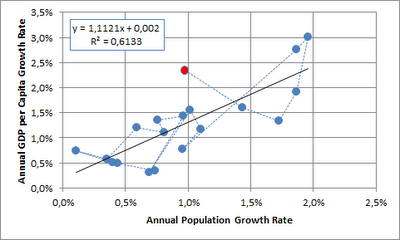- China’s literally ground-breaking copper inventories (August 14, 2012)
- China is being buried alive in copper (April 26, 2012)
- Let’s count the copper with dust on it (May 31, 2011)
- China’s bonded-warehouse copper mystery (December 21, 2010)
We would like to add one additional piece to the puzzle by looking at producers inventory, particularly Codelco, the largest copper producer worldwide. While Codelco is not a publicly listed company, commendably it makes its quarterly reports reports available in the public domain.
We went through the the financial reports and focused on two metrics: inventory and revenues. We understand that inventory is broader than finished products. Nevertheless the ratio between inventory and revenues (inventory expressed in months of production) is very revealing:
The last data point is for the quarter ending on September 30, 2012. We view it to be quite interesting that the two previous episodes with the inventory exceeding 2 months of production were (i) in 2003 with copper prices below USD 2'000 per ton and (ii) in early 2009 with copper prices falling below USD 4'000. At the moment the (relatively) high inventory levels have not resulted in any price reaction.
We would also like to point out to some interesting movement in copper data as jsut published in the FT (Chinese copper data’s warning signal).
Chinese copper data have just taken a worrying turn for the worse. The country’s imports of the red metal tumbled 22 per cent in October to their lowest in more than a year. At the same time, stocks of the metal have risen to a record high: in October alone, inventories at Shanghai exchange and bonded warehouses collectively rose by about 135,000 tonnes, and are now not far off 1m tonnes, most traders believe. Put those two facts together, and the Chinese copper market appears to be flashing a warning signal. Indeed, back-of-the-envelope calculations suggest a month-on-month drop of almost 20 per cent in Chinese apparent copper demand in October.




































.png)












